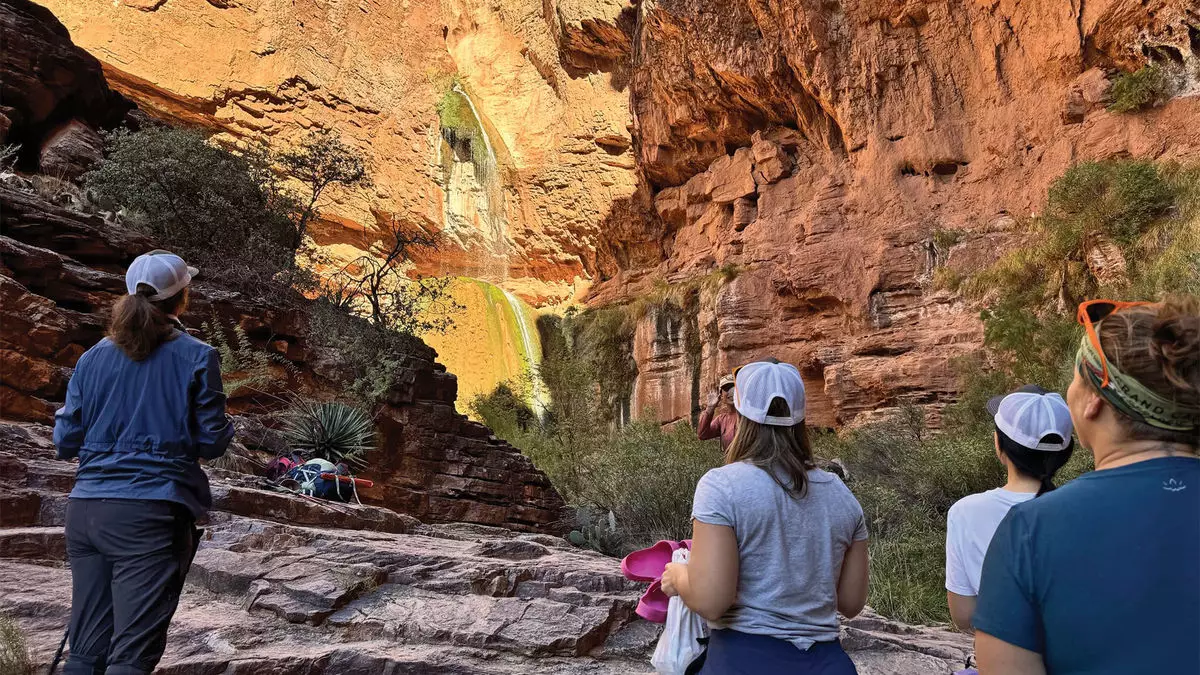The recent decision by the Trump administration to terminate the employment of 1,000 National Park Service (NPS) workers has sent shockwaves throughout the tourism industry, particularly for those operators specializing in national park tours. While some operators have initially been reassured that services won’t be hindered during the busy summer season, reality paints a different picture. With layoffs affecting park operations, the communal fear of service disruptions looms large, threatening the vital economic lifeline that national parks provide to surrounding communities.
Initial Reactions and Protests
Since the announcement of these layoffs on February 14, there has been a noticeable outcry from both the public and former park employees. Demonstrations have taken place, including a symbolic protest where an upside-down American flag was hung from El Capitan in Yosemite—a poignant gesture illustrating the gravity of the situation. The protests are not merely about job losses but echo broader concerns regarding the preservation of America’s cherished natural landscapes and the services that facilitate their enjoyment.
Despite these initial waves of backlash, the Trump administration also revealed plans to hire up to 7,700 seasonal workers while restoring at least 50 full-time positions to manage various responsibilities, from park maintenance to visitor services. However, such reassurances may fail to quell the anxieties of operators. The uncertainty created by the layoffs can lead to behaviors from visitors that dramatically affect tour companies, as evidenced by reports of cancelations due to a decline in customer confidence.
Catherine Prather, President of the National Tour Association, voiced particular concern regarding the economic ramifications of these staffing reductions. With 80% of her organization’s members involved in national park tours, the financial toll could be substantial. One operator, who requested anonymity, relayed that they had to cancel tour itineraries due to drastically low booking rates—an alarming turnaround for a business that had previously thrived on full summer tours. The estimated loss of up to $1 million emphasizes how intimately tied the fortunes of tour operators are to the functionality of the parks.
These cutbacks aren’t just a concern for tour companies; the surrounding gateway communities depend heavily on tourism. In 2023, park visitors contributed $26.4 billion to those economies, leading to the support of nearly 415,000 jobs. As community livelihoods hang in the balance, the domino effect of canceled park tours could exacerbate an already precarious situation, potentially leading to losses that resonate far beyond the parks themselves.
Operational Challenges and Visitor Experience
Tour operators like Scott Cundy of Wildland Trekking, a company offering numerous hiking and backpacking trips across multiple sites, expressed worries about the implications of a reduced workforce. The capacity for national park staff to effectively manage regulations, provide permits, and maintain the cleanliness and safety of parks is vital to the visitor experience. A reliance on less staff could mean longer wait times for essential services and even hindered emergency responses—concerns too significant to overlook.
Caleb Lawson, vice president of Sunrise Tours, noted that guests have already reached out to express their apprehension over upcoming trips, highlighting how even the fear of service disruptions could change travel plans for individuals considering parks as their vacation destination. Though Lawson has reported no cancellations yet, the rising tide of inquiries about switching to alternative itineraries indicates a worrying trend that could lead to reduced foot traffic in those parks.
Despite these valid concerns, some tour providers remain cautiously optimistic. Jeremy Palmer, president of Tauck, has pursued reassurance from various contacts in key national parks, including Yosemite and Yellowstone, and feels somewhat comforted. Additionally, Stephanie Brooks from Globus emphasizes their preparedness to adjust itineraries as circumstances evolve. The collaborative efforts among tour operators and their partners are necessary to navigate this uncertainty and ensure a level of service continues despite the operational frailty stemming from staffing cuts.
As the summer season approaches, the full extent of the impact of these layoffs on both the parks and the tourism industry remains to be seen. Tour operators are on high alert, hoping for a resolution that preserves the beauty and enjoyability of national parks for future visitors, even while facing an ever-changing backdrop of federal policy that could affect the availability of the very experiences many have come to cherish.
While assurances from the agency and operators may alleviate some fears, the travails of the staffing cuts continue to cast a long shadow over what traditionally is a celebratory busy season for America’s national parks. How long these struggles will unfold and their full ramifications will surely require vigilance among all stakeholders involved.
- The Rise of Aberlour 18: A Triumph in the World of Scotch - June 24, 2025
- The Departure of Captain Kate McCue: A New Chapter Begins - June 24, 2025
- Transforming Travel: The Promising Future of NDC Adoption in the Aviation Sector - June 24, 2025


Leave a Reply